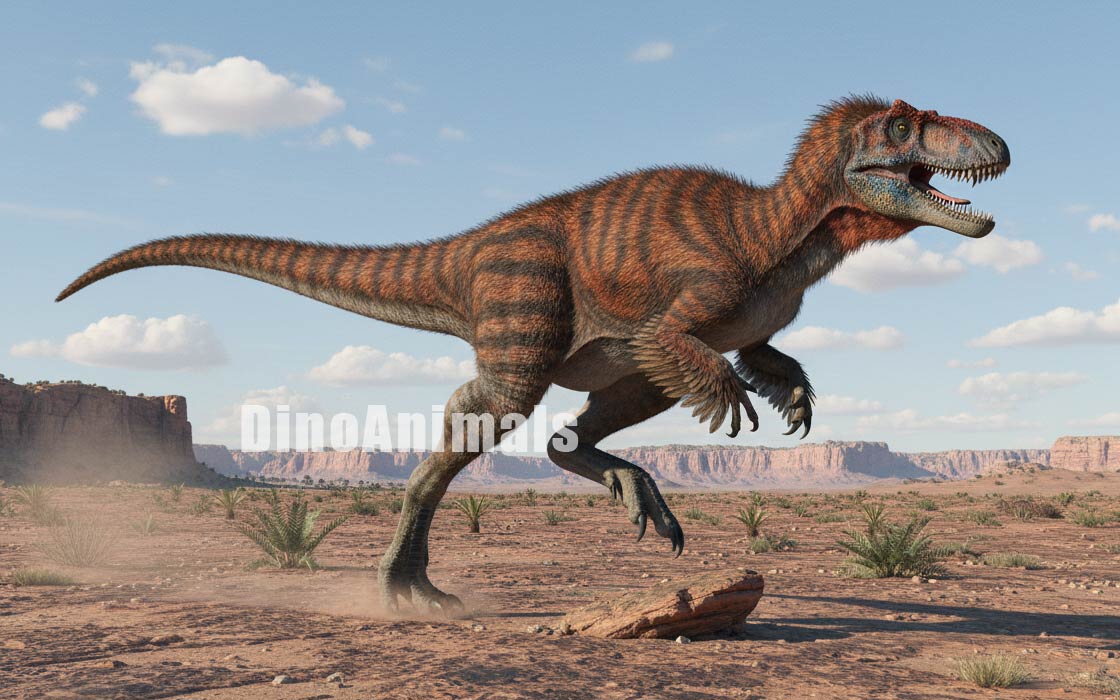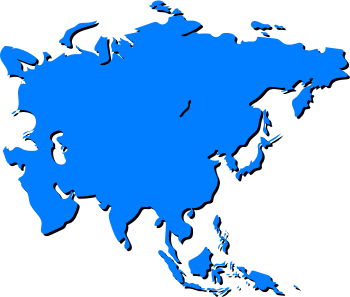Every month, 100,000 readers use the Dinosaur Database, but we receive no support from you. Developing and updating the database requires a lot of work. If you want it to remain open and be updated, please support us via the "Buy us a coffee" button available on every page or via the Support page.
Dinosaur: Khankhuuluu mongoliensis

| Length*: | 6.3 m | 20.7 ft |
| Weight*: | 750 kg | 1,653 lb |
*The largest known specimen
Period
Epoch: Late Cretaceous
Stage: Turonian-Santonian
Years: 93.9–83.6 Ma
Details
Status: valid
Author: Voris et al.
Year: 2025
Distribution
Area: Asia
Country: Mongolia
Region: Dornogovi
Formation: Bayanshiree
Description
Khankhuuluu mongoliensis
Khankhuuluu mongoliensis is a mid-sized tyrannosauroid theropod from the Upper Cretaceous Bayanshiree Formation of Mongolia. It represents a “mid-grade” lineage that lies just outside Eutyrannosauria – the group that includes famous apex predators like Tyrannosaurus rex and Tarbosaurus bataar. The genus name Khankhuuluu derives from Mongolian words meaning “prince” (khankhuu) and “dragon” (luu), and the species name mongoliensis refers to its country of origin.
The discovery of Khankhuuluu sheds new light on the early evolution and biogeography of large-bodied tyrannosauroids. Its combination of primitive and derived traits illustrates how peramorphosis (accelerated growth) and paedomorphosis (retention of juvenile traits) shaped the evolution of later tyrannosaurids.
Geographic Coordinates
Locality: Baishin-Tsav locality, southeastern Mongolia (Bayanshiree Formation)
Physical Characteristics
Khankhuuluu mongoliensis was a medium-sized, shallow-skulled tyrannosauroid estimated to have had a skull length between 600–700 mm (23.6–27.6 in). Based on skeletal proportions from the holotype and referred specimens, its total body length is estimated at 5–6.5 meters (16.4–31.3 ft), with a weight likely between 500–800 kg (1,102–1,634 lb).
It can be diagnosed by several autapomorphies, including:
- A shallow, rugose nasal midline ridge
- Pneumatic recesses in the nasal and lacrimal bones
- A quadrate that lacks a medial wall on the pneumatic recess
- A deep subacromial depression on the scapula
- A divided subglenoid fossa in the coracoid
- An anteroposteriorly expanded dorsal process of the quadratojugal
- A tibia longer than the femur – unusual among mature tyrannosaurids
These and other features reflect a mosaic of traits typical of juvenile eutyrannosaurians but retained into adulthood, possibly due to heterochronic processes.
Paleontological Material
- Holotype: MPC-D 100/50 – fused nasals, partial lacrimal, quadrates, vomer, pterygoids, dorsal vertebrae, distal caudals, scapulocoracoid, metatarsal III
- Referred: MPC-D 100/51 – postorbital, quadratojugal, ilium, ischium, femur, tibia, metatarsus, pedal phalanges
- Isolated frontal: MPC-D 102/4 (Tsaagan Teg locality)
Diet and Feeding Habits
As a carnivorous theropod, Khankhuuluu was a likely predator or opportunistic scavenger. Its lightly built skull and laterally compressed teeth suggest it hunted smaller prey or used rapid bites rather than bone-crushing force. The shallow, gracile morphology contrasts with the deep-skulled, power-biting tyrannosaurines, pointing to an ecological niche as a mesopredator.
Habitat and Distribution
Khankhuuluu lived during the upper Turonian to upper Santonian stages of the Late Cretaceous (~90–84 million years ago) in what is now southeastern Mongolia. The Bayanshiree Formation was a semi-arid floodplain environment, supporting a diverse dinosaur fauna that included:
- Small to mid-sized theropods
- Ceratopsians and ornithopods
- Early hadrosaurids and titanosaurs
This ecosystem represents an important stage in the faunal transition from early tyrannosauroids to the later dominance of eutyrannosaurians in North America.
Behavior and Social Structure
Direct behavioral evidence is lacking, but its body plan suggests Khankhuuluu was an agile predator with strong hind limbs and an elongated tibia. The combination of primitive and juvenile-like cranial traits in adult individuals suggests that it retained an ecological role distinct from both larger apex predators and smaller coelurosaurs.
Discovery and Research
The fossils of Khankhuuluu were originally collected in the 1970s and misattributed to Alectrosaurus olseni. A comprehensive redescription in 2025 by Voris et al. revealed the specimens to belong to a distinct genus and species. Phylogenetic analysis places Khankhuuluu as the sister taxon to Eutyrannosauria, bridging the gap between smaller early tyrannosauroids and the massive apex predators of the Campanian–Maastrichtian.
The study also redefines relationships within Tyrannosauridae, showing that the long-snouted Alioramini are highly derived and not primitive forms, a conclusion supported by comparative anatomy with Khankhuuluu.
Significance and Notable Facts
- One of the best-represented mid-grade tyrannosauroids
- Closest known sister taxon to Eutyrannosauria
- Shows that paedomorphosis and peramorphosis both influenced tyrannosaurid evolution
- Demonstrates Asian origin of mid-grade tyrannosauroids and subsequent dispersal to North America
- Retains juvenile-like traits despite osteological maturity, indicating heterochronic shifts in development
Conclusion
Khankhuuluu mongoliensis is a pivotal taxon in tyrannosauroid evolution. Its unique blend of traits provides insight into how juvenile features in early theropods were retained or modified in later lineages through evolutionary shifts in growth timing. As the closest known relative of Eutyrannosauria, it serves as a key reference point for understanding the rise of the most iconic apex predators of the Mesozoic.
Locations
Sources
Material: Skull bones, dorsal and caudal vertebrae, scapulocoracoid, pelvis, femur, tibia, metatarsus, pedal phalanges
References: Voris, J. T., Zelenitsky, D. K., et al. (2025). A new Mongolian tyrannosauroid and the evolution of Eutyrannosauria




